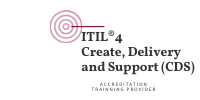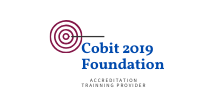ITIL ® 4 Acquiring & Managing Cloud Services


ITIL® 4 Specialist Acquiring and Managing Cloud Service
|
Certification: ITIL® 4 Specialist: Acquiring and Managing Cloud Services Duration: 3 Days |
|
Course Description:
The ITIL® 4 Specialist: Acquiring and Managing Cloud Services qualification is intended to provide candidates with best practice guidance on how to use the capabilities offered by the cloud to identify and pursue opportunities, manage risks, and achieve their desired business outcomes. It is also intended to provide the candidate with the practical skills and knowledge necessary to create, align and integrate key concepts of the ITIL® framework to the cloud consumer journey.
The ITIL® 4 Specialist: Acquiring and Managing Cloud Services examination is intended to assess whether the candidate can demonstrate sufficient understanding and application of the concepts covered in this course to align and integrate key elements of the ITIL® framework such as the Guiding Principles and the Service Value Chain with a ‘cloud services user journey’.
Audience:
The target audience for ITIL® 4 Specialist: Acquiring and Managing Cloud Services include:
- C-level (and aspiring C-level)
- Cloud architects and cloud consultants
- Procurement and Capture Managers considering procuring cloud services
- Individuals continuing their journey in service management
- ITSM managers and aspiring ITSM managers
- Managers of all levels involved in shaping direction and strategy or developing a continually improving team
- Existing ITIL® qualification holders wishing to develop their knowledge.
Learning Objectives:
At the end of this course, participants will be able to:
- Understand the role of cloud services in an organization.
- Know how to define an organization’s requirements for adopting, and readiness to adopt, cloud solutions.
- Know how to identify the types of cloud services and understand their applicability to an organization's context.
- Understand how cloud services are selected and procured in the 'offer' step of the customer journey.
- Know how to onboard and offboard cloud services.
- Know how to manage the use of cloud services.
- Know how to evaluate and improve a cloud strategy.
Prerequisites:
There are no formal prerequisites for the course. The relevant key concepts from the ITIL® 4 framework will be covered as part of each module, making it accessible to anyone interested in gaining critical skills in these areas.
English to sitting on exam ITIL® 4 Acquiring and Managing Cloud Services
Course Outline:
Course Introduction
- Let’s Get to Know Each Other
- Course Overview
- Course Learning Objectives
- Target Audience
- ITIL® 4 Certification Scheme
- Course Structure
- Cloud Customer Journey
- Course Components
- Course Agenda
- Exam/Assessment Details
- Learning Objctives
Module 1: Understand the role of cloud services in an organization
- 1.1 Describe the characteristics of the cloud
- 1.2 Describe the approaches to cloud adoption (2.3.2 - 2.3.2.3):
- One-off piecemeal (2.3.2.1)
- Evolutionary (2.3.2.2)
- Big bang (2.3.2.3)
- 1.3 Describe the key cloud deployment models and cloud service models (1.3-1.3.4):
- Public (1.3.4)
- Private (1.3.4)
- Hybrid (1.3.4)
- Software-as-a-Service (SaaS) (1.3.2)
- Platform-as-a-Service (PaaS) (1.3.2)
- Infrastructure-as-a-Service (IaaS) (1.3.2)
Module 2: Know how to define an organization’s requirements for adopting, and readiness to adopt, cloud solutions:
- 2.1 Describe the structure and content of a business case for cloud (4.7.2)
- 2.2 Know how to define organization’s requirements for cloud solutions (3.4 – 3.4.2.2, 3.4.4 – 3.4.4.6, 4.3)
- 2.3 Carry out an organizational readiness assessment for cloud adoption (3.6 - 3.6.1.5)
- 2.4 Know how to communicate a cloud business case (4.7.3)
Module 3: Know how to identify the types of cloud services and understand their applicability to an organization's context:
- 3.1 Describe the types of cloud service providers (3.2.1):
- Cloud service aggregates
- Cloud service model specialist
- 3.2 Describe the key elements of a cloud strategy for a service consumer (Chapter 2 Table 2.10 Cloud strategy key elements and descriptions only)
- 3.3 Describe how cloud solutions affect the organization’s services and agreements with customers (3.4.2 - 3.4.2.2)
- 3.4 Identify the available services that are relevant to the organization’s context (3.7.5, 3.2.1)
Module 4: Understand how cloud services are selected and procured in the 'offer' step of the customer journey:
- 4.1 Describe the costs of using cloud services (2.5.2 - 2.5.2.5)
- 4.2 Describe the benefits and opportunities created by cloud services (1.4 – 1.4.1)
- 4.3 Describe the key risks and disbenefits of using cloud services (2.5.3 – 2.5.3.8):
- Shifts in roles and responsibilities (2.5.3.1)
- Unauthorized procurement of cloud services (2.5.3.2)
- Security of cloud services (2.5.3.3)
- 4.4 Describe security and compliance considerations of using cloud services (6.3 - 6.3.6)
- 4.5 Describe the inputs and outputs of a return on investment (ROI) for cloud (4.6.1 - 4.6.1.5)
Module 5: Know how to onboard and offboard cloud services
- 5.1 Describe the key approaches for migrating to or from the cloud (6.2.1 - 6.2.3)
- Moving from in-house to cloud solutions (6.2.1)
- Migrating from one cloud service provider to another (6.2.2 – 6.2.2.1)
- Migrating away from the cloud (6.2.3)
- 5.2 Know how to select an appropriate approach for migrating to or from the cloud (6.2.1, 6.2.2 – 6.2.2.1)
- 5.3 Carry out the activities of onboarding/offboarding cloud services (6.1 - 6.1.6):
- Planning for onboarding (6.1.1, 6.1.7)
- Involving users in the onboarding plan (6.1.2)
- Establishing communications channels (6.1.3)
- Preparing users for the new service (6.1.4)
- Elevating mutual capabilities (6.1, 6.1.5)
- Offboarding customers and users (6.1.6)
- 5.4 How to modify an operating model to support migration to cloud services (7.2 – 7.2.2)
Module 6: Know how to manage the use of cloud services
- 6.1 Describe the shared responsibility model (5.5 - 5.5.3)
- 6.2 Explain how to measure quality of consumed cloud services (7.6, 7.7)
- 6.3 Describe the tools, techniques, methods, and controls used to manage the use of cloud services (7.5 - 7.5.2)
- 6.4 Apply appropriate tools, techniques, methods, and controls to manage the use of cloud services in context (7.5 - 7.5.2)
Module 7: Know how to evaluate and improve a cloud strategy
- 7.1 Explain adjustments for a cloud strategy to respond to VUCA challenges (8.3 - 8.3.2)
- 7.2 Apply the continual improvement model to an organization’s cloud strategy (8.4 - 8.4.7)
Exam Information
Exam Facts
|
Delivery |
Online (Web based) |
|
Format |
Closed book |
|
Proctoring |
Web-proctored |
|
Duration |
90 minutes *candidates taking exam in a language that is not their native, may be awarded 25% extra time (113 minutes in total) |
|
# of questions |
40, simple multiple choice (1 mark per question)
|
|
Pass Grade |
65% (26 marks out of 40) |
Exam Prerequisites
The candidate must have attended accredited training for the ITIL® 4 Specialist: Acquiring and Managing Cloud Services course.



